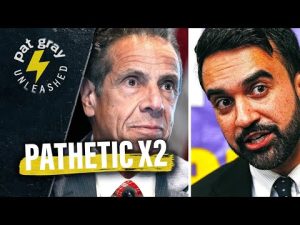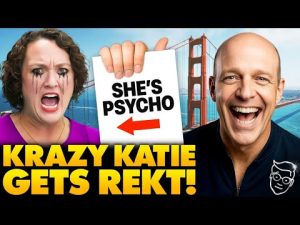On a bright Saturday morning, the streets of New York City were abuzz with activity as protesters gathered for the next No Kings Day event. This planned protest aimed to make waves in the heart of Times Square, a location that usually attracts tourists seeking the bright lights and bustling atmosphere. However, on this day, the scene was less about captivating sights and more about captivating messages, with thousands of attendees expected to flood the streets to voice their opinions against former President Donald Trump and his policies.
Banners were hoisted high in the air, all echoing a similar sentiment: a rejection of authoritarianism and a battle against what organizers deemed “billionaire first politics.” Among the chief organizers of this demonstration were the Democratic Socialists of America and even the American Communist Party. But for many, this event was more than just a protest; it had become a centerpiece of hardline opposition against Trump, with one banner reading, “The fall of the Trump fascist regime.” Such phrases were meant to encapsulate the fervent emotions igniting those gathered, with many activists hoping that this show of force might influence public perception and political discourse.
Interestingly, not everyone viewed this event through the same lens. House Speaker Mike Johnson weighed in, referring to the gathering as merely a “Hate America Rally.” His comments reflected a growing divide in the nation, where opposing viewpoints were facing off in an increasingly polarized climate. For Johnson and his allies, the protests didn’t just represent dissent; they were entwined with a narrative that suggested a greater, more sinister agenda at play, potentially fueled by financial backers like George Soros. Criticism of big-money influence in politics highlighted the contrast the right often draws, suggesting that elitist donors were trying to steer political movements for their own purposes.
Adding to the complexity of the event, various groups were expected to unite under the No Kings banner, including activists promoting the Free Palestine movement and labor organizations. The organizers planned to create a vibrant, loud, and colorful event, all while some experts warned of the potential for violence, especially given the tensions surrounding issues related to Israel. As protesters rallied around themes of anti-fascism, anti-Trump sentiment, and solidarity with Palestine, questions arose about how intertwined these causes had become.
While the intentions behind the protest may have been clear to its attendees, the overall narrative from the opposing side painted a tumultuous picture. Critics argued that many of the protests had been co-opted by groups with drastically different agendas, straying far from the ideals they purported to represent. In essence, what began as a movement against one political figure had turned into a coalition of many causes, raising eyebrows about the unity of purpose among the protesters.
As the day unfolded, it became apparent that the battle lines were drawn not just geographically in New York City, but across the entire nation. With future protests already on the calendar and more groups preparing to join the fray, the political landscape promised to remain lively, and perhaps increasingly contentious. As the sun set on Times Square, each side braced for the ongoing struggle over ideas, representation, and the very soul of the American political system.







